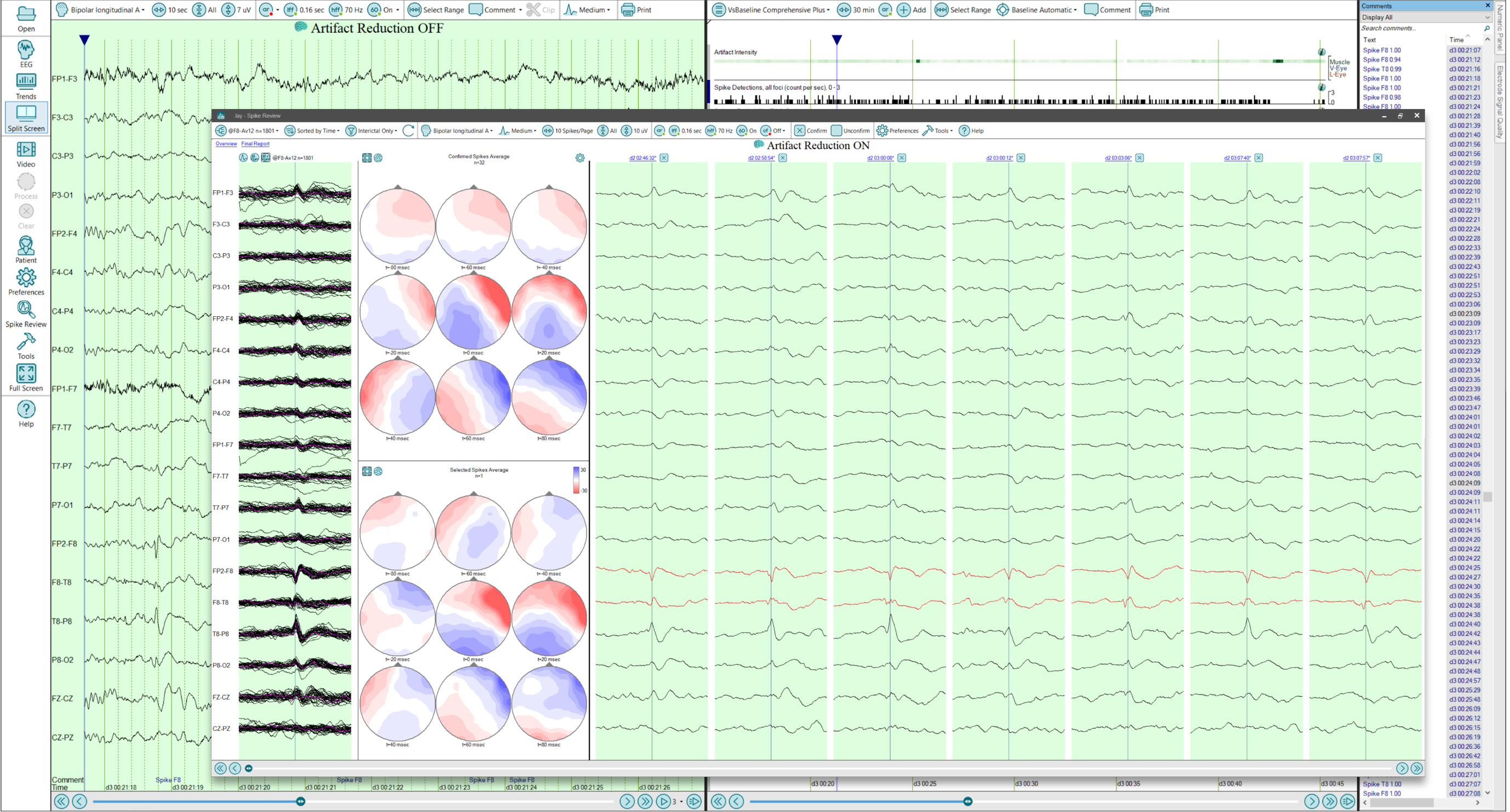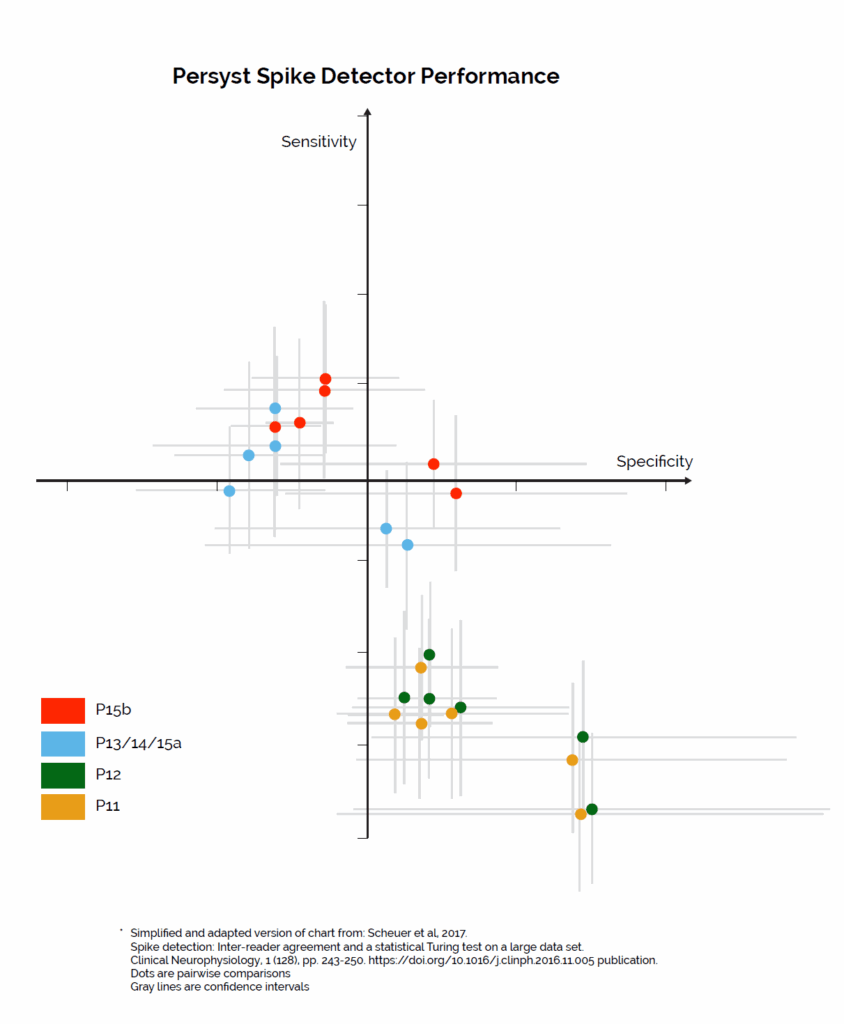Persyst Spike Detection is still unprecedented in accuracy, performing within the range of skilled humans.
The Persyst Spike Detector has continued to make generational leaps in spike detection, achieving performance at the level of skilled human readers. Now, leveraging a broader training dataset, the newest Persyst Spike Detector builds on the latest advancements, improving performance even on the most challenging EEGs.
Historically, the Persyst 13 Spike Detector was statistically noninferior to the study’s human readers for spike identification. In a 2017 study evaluating a large set of EEG recordings containing epileptiform abnormalities, the performance of skilled human readers was compared to three Persyst spike detection algorithms: the P13 spike detector, and two previous Persyst spike detector versions (P12 and P11). Spikes and sharp waves were marked by skilled readers and the algorithms. Pairwise sensitivity and false positive rates were calculated for each human-human and algorithm-human pair.
This was the first time that a spike detection algorithm and human EEG readers performed similarly.
Now, with the latest update, the Persyst Spike Detector delivers even greater accuracy. It has been retrained using a significantly expanded dataset, improving both sensitivity and false positive rates, especially in pediatric and normal EEGs, where detection is particularly challenging. The method for distinguishing generalized from focal spikes has been refined, and the Spike Probability ranking has been recalibrated to better align with expert consensus. These advancements result in a measurable performance increase over the previous generation.
Persyst Spike Detection uses a set of advanced neural networks, applied across several different montages, to monitor EEG background, the presence or absence of artifacts, the waveform morphology and voltage field spread of possible abnormalities. All of this allows the detector to be extremely sensitive while maintaining a low false positive rate.
Persyst Spike Detection frees time for advanced spike analysis
The presence of spikes and sharp waves in EEG data strongly support a diagnosis of epilepsy or an elevated risk of seizures. Their morphologic characteristics and spatial distribution are key aspects for either localizing potential foci of seizure origin or in establishing a syndromic diagnosis.
Despite their importance, spikes and sharp waves are vaguely defined, introducing variability in what EEG readers mark as spikes. In addition, finding and marking spikes can be quite time consuming, particularly in long EEG files, or in busy clinical practices with high volumes of patient EEG monitoring. Manual spike marking and categorizing is a challenge for these reasons.
Persyst Spike Detection is fast, automated, and has been shown to perform within the range of skilled humans. Instead of clinicians manually combing through days of EEG, Persyst Spike Detection and Spike Trending frees that time instead for advanced spike analysis with Spike Review, and facilitates consideration of a more complete spike data set.



